Tax Considerations for Forty Seven Merger Scott Mathews Scott.Mathews@mossadams.com (408) 558-7605 Tax Senior Manager
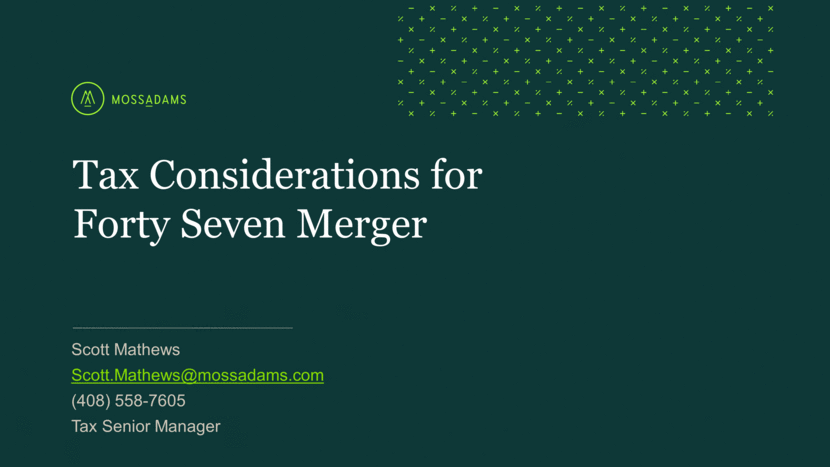
Tax Considerations for Forty Seven Merger Scott Mathews Scott.Mathews@mossadams.com (408) 558-7605 Tax Senior Manager

Forward-Looking Statements This communication contains forward-looking statements, within the meaning of the Private Securities Litigation Reform Act of 1995, related to Gilead, Forty Seven and the acquisition of Forty Seven by Gilead that are subject to risks, uncertainties and other factors. All statements other than statements of historical fact are statements that could be deemed forward-looking statements, including all statements regarding the intent, belief or current expectation of the companies’ and members of their senior management team. Forward-looking statements include, without limitation, statements regarding the business combination and related matters, prospective performance and opportunities, post-closing operations and the outlook for the companies’ businesses, including, without limitation, the ability of Gilead to advance Forty Seven’s product pipeline, including magrolimab, FSI-174 and FSI-189; regulatory approval of magrolimab, FSI-174 and FSI-189 on a timely basis; the anticipated timing of clinical data; the possibility of unfavorable results from clinical trials; filings and approvals relating to the transaction; the expected timing of the completion of the transaction; the ability to complete the transaction considering the various closing conditions; difficulties or unanticipated expenses in connection with integrating the companies; and any assumptions underlying any of the foregoing. Investors are cautioned that any such forward-looking statements are not guarantees of future performance and involve risks and uncertainties and are cautioned not to place undue reliance on these forward-looking statements. Actual results may differ materially from those currently anticipated due to a number of risks and uncertainties. Risks and uncertainties that could cause the actual results to differ from expectations contemplated by forward-looking statements include: uncertainties as to the timing of the tender offer and merger; uncertainties as to how many of Forty Seven’s stockholders will tender their stock in the offer; the possibility that competing offers will be made; the possibility that various closing conditions for the transaction may not be satisfied or waived, including that a governmental entity may prohibit, delay or refuse to grant approval for the consummation of the transaction; the effects of the transaction on relationships with employees, other business partners or governmental entities; the difficulty of predicting the timing or outcome of FDA approvals or actions, if any; the impact of competitive products and pricing; other business effects, including the effects of industry, economic or political conditions outside of the companies’ control; transaction costs; actual or contingent liabilities; and other risks and uncertainties detailed from time to time in the companies’ periodic reports filed with the U.S. Securities and Exchange Commission (the “SEC”), including current reports on Form 8-K, quarterly reports on Form 10-Q and annual reports on Form 10-K, as well as the Schedule 14D-9 to be filed by Forty Seven and the Schedule TO and related tender offer documents to be filed by Gilead and Toro Merger Sub, Inc., a wholly owned subsidiary of Gilead. All forward-looking statements are based on information currently available to Gilead and Forty Seven, and Gilead and Forty Seven assume no obligation and disclaim any intent to update any such forward-looking statements. Additional Information and Where to Find It The tender offer described in this communication has not yet commenced. This communication is for informational purposes only and is neither an offer to purchase nor a solicitation of an offer to sell shares of Forty Seven, nor is it a substitute for any tender offer materials that Gilead, its acquisition company or Forty Seven will file with the SEC. A solicitation and an offer to buy shares of Forty Seven will be made only pursuant to an offer to purchase and related materials that Gilead intends to file with the SEC. At the time the tender offer is commenced, Gilead will file a Tender Offer Statement on Schedule TO with the SEC, and Forty Seven will file a Solicitation/Recommendation Statement on Schedule 14D-9 with the SEC with respect to the tender offer. FORTY SEVEN’S STOCKHOLDERS AND OTHER INVESTORS ARE URGED TO READ THE TENDER OFFER MATERIALS (INCLUDING AN OFFER TO PURCHASE, A RELATED LETTER OF TRANSMITTAL AND CERTAIN OTHER TENDER OFFER DOCUMENTS) AND THE SOLICITATION/RECOMMENDATION STATEMENT BECAUSE THEY WILL CONTAIN IMPORTANT INFORMATION WHICH SHOULD BE READ CAREFULLY BEFORE ANY DECISION IS MADE WITH RESPECT TO THE TENDER OFFER. The Offer to Purchase, the related Letter of Transmittal and certain other tender offer documents, as well as the Solicitation/Recommendation Statement, will be sent to all stockholders of Forty Seven at no expense to them. The Tender Offer Statement and the Solicitation/Recommendation Statement will be made available for free at the SEC's web site at www.sec.gov. Additional copies may be obtained for free by contacting Gilead or Forty Seven. Free copies of these materials and certain other offering documents will be made available by Gilead by mail to Gilead Sciences, Inc., 333 Lakeside Drive, Foster City, CA 94404, attention: Investor Relations, by phone at 1-800-GILEAD-5 or 1-650-574-3000, or by directing requests for such materials to the information agent for the offer, which will be named in the Tender Offer Statement. Copies of the documents filed with the SEC by Forty Seven will be available free of charge under the “Investors” section of Forty Seven’s internet website at ir.fortyseveninc.com. In addition to the Offer to Purchase, the related Letter of Transmittal and certain other tender offer documents, as well as the Solicitation/Recommendation Statement, Gilead and Forty Seven file annual, quarterly and current reports, proxy statements and other information with the SEC. Gilead’s and Forty Seven’s filings with the SEC are also available for free to the public from commercial document-retrieval services and at the website maintained by the SEC at www.sec.gov.
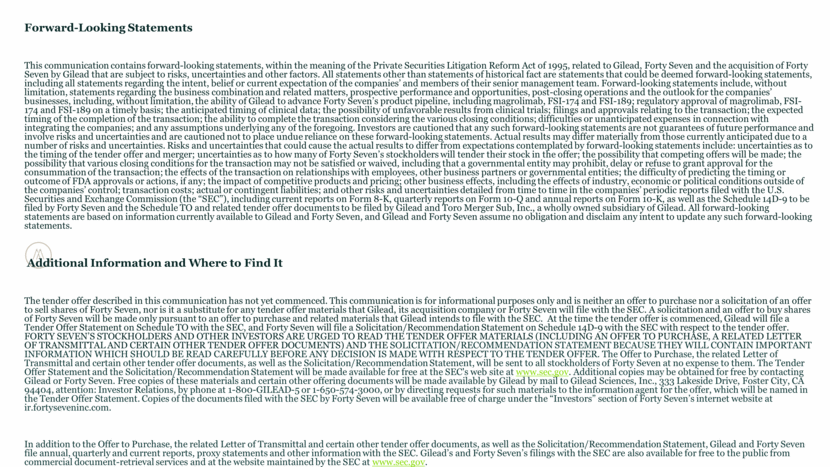
Income Brackets & Tax Rates Tax rates on ordinary income vs. capital gains Alternative minimum tax (AMT) Key Terminology Non-Qualified Stock Options (NQSOs) Incentive Stock Options (ISOs) Timing of Tax Payments AGENDA
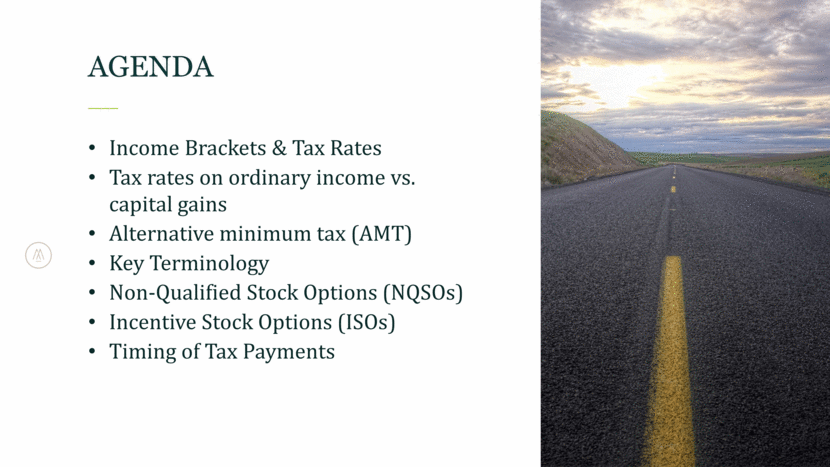
Income Brackets & Tax Rates 4 12% 22 % 24 % 32 % 35 % 37 % 10% 39.6 % 35 % 33 % 28 % 25 % 15% 10% Married Filing Jointly
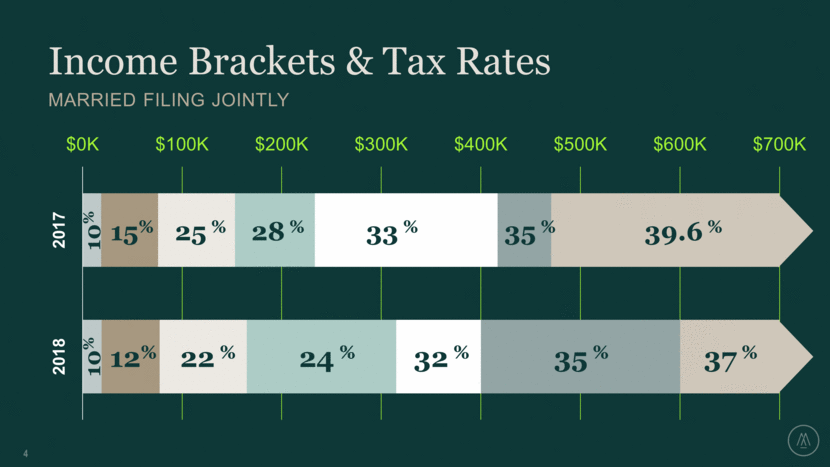
Income Brackets & Tax Rates 5 12% 22 % 24 % 32 % 35 % 37 % 10% 39.6 % 35 % 33 % 28 % 25 % 15% 10% Single
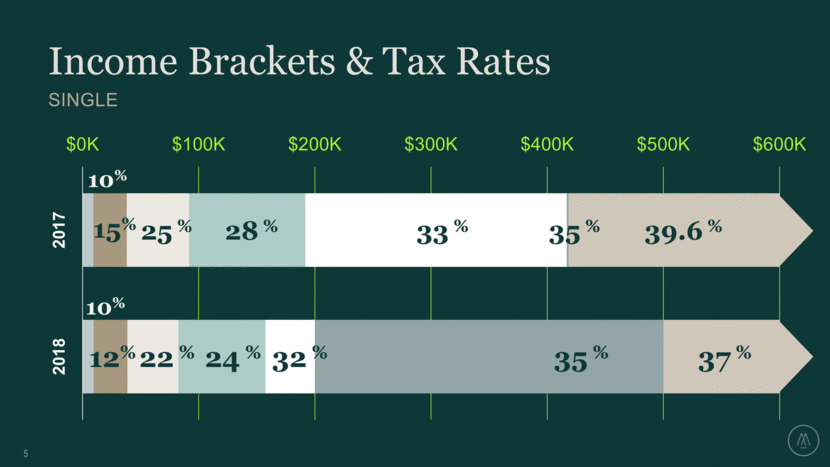
Ordinary income = Wages, interest income, ordinary dividends, etc. Capital asset held for more than 1 year (or qualified dividends) = Long-term capital gain (LTCG) Capital asset held for less than 1 year = Short-term capital gain (STCG) Alternative Minimum Tax Tax Rates - Ordinary Income vs. Capital Gain
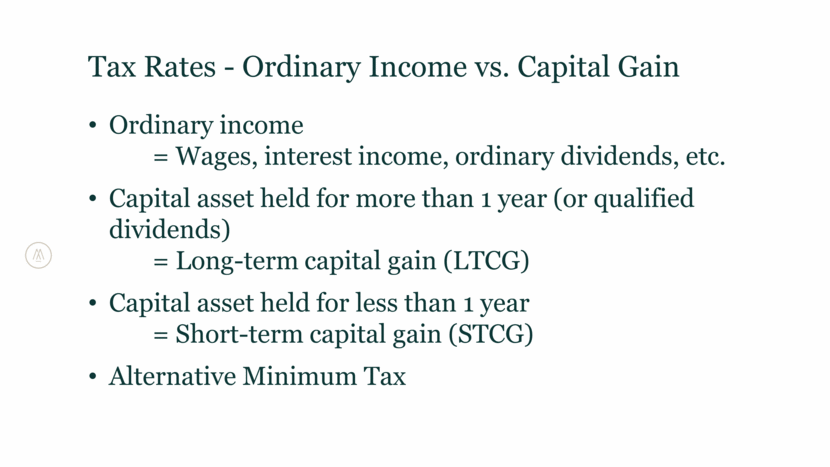
Ordinary income = wages, interest income, ordinary dividends, etc. Federal rate of 10, 12, 22, 24, 32, 35, or 37% (over $500K single or $600K married filing joint) Plus .9% Medicare surtax on wages if base over $200K single or $250K married filing joint California income tax rate: 9.3%-13.3% Tax Rates - Ordinary Income vs Capital Gain
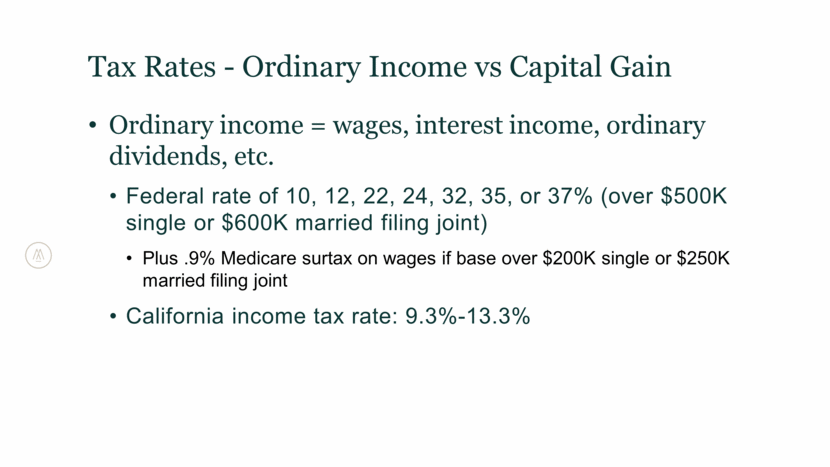
Capital asset held for more than 1 year = Long-term capital gain (LTCG) Federal rate of 15% if income is less than $434K single or $488K married filing joint. Rises to 20% if over limits. Plus 3.8% Medicare surtax on net investment income if modified adjusted gross income is over $200K single or $250K married filing joint State income tax rate (often same as ordinary tax rate) Tax Rates continued Ordinary Income vs Capital Gain
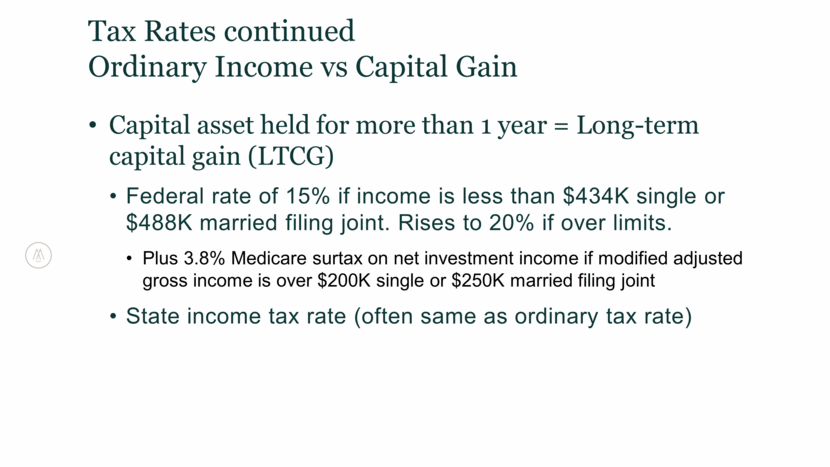
Capital asset held for less than 1 year = Short-term capital gain (STCG) Federal same as ordinary income but also includes 3.8% Medicare surtax on net investment income if modified adjusted gross income is over $200K single or $250K married filing joint State income tax rate (often same as ordinary tax rate) Tax Rates continued Ordinary Income vs Capital Gain
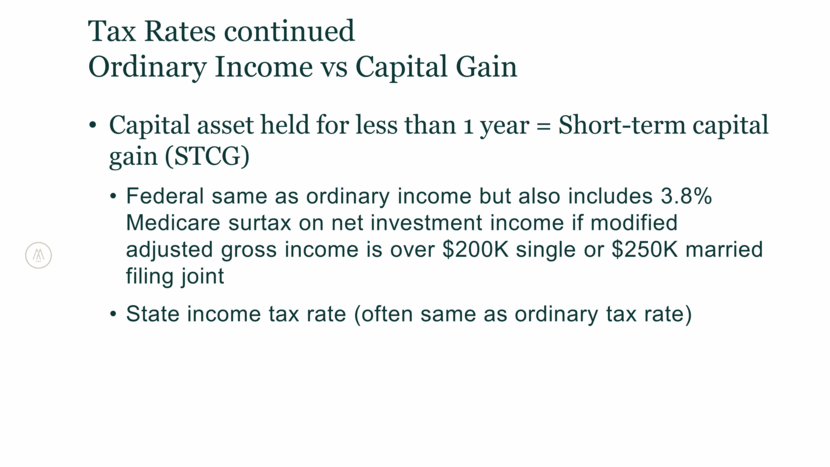
Regular Tax Taxable income x Rate Deductions Exemptions Alternative Minimum Tax (AMT) ++(ISO) $53,900 or $83,800 0 AMTI x AMT rate (28%) AMT Pay Larger Amount Income Regular Tax AMT
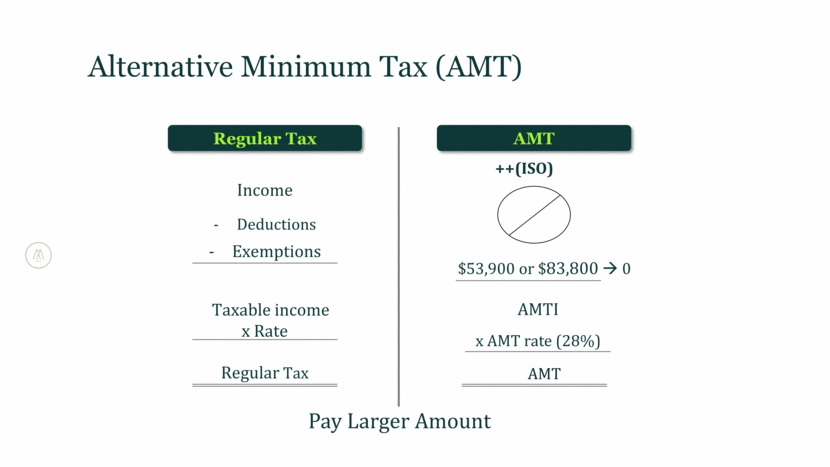
Grant Date – the effective date of the original contract Strike Price – the purchase price for each share under the option. Exercise Date – the date when the holder purchases/exercises the option. Merger Date – date when sale/merger is effective. Merger Price – price assigned to each share of stock or option outstanding at time of deal closing (consideration) Key Terminology
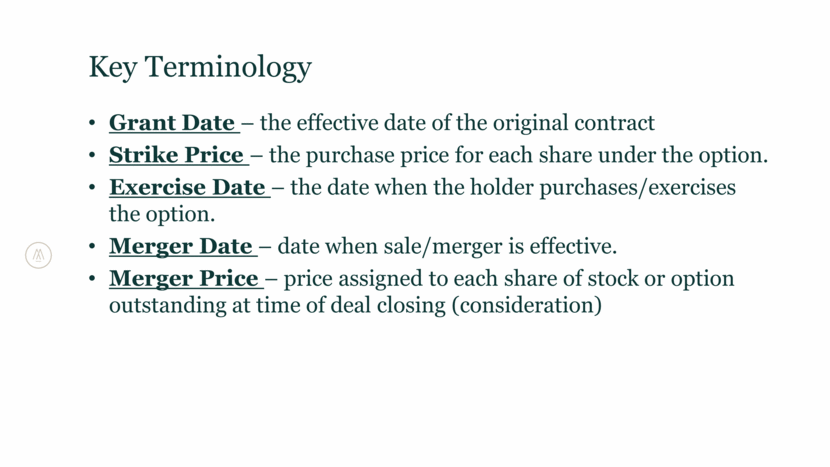
Ordinary income recognized on unexercised options Difference between Merger price (payable) and exercise price Reported as W-2 wages Subject to federal and state withholdings at supplemental rates Federal 22% (if supplemental income is over $1M then 37% of the amount over $1M) CA: 10.23% Subject to Medicare and FICA withholding of 1.45% and 6.2% respectively If wages exceed FICA Wage Base for 2020 ($137,700), Medicare withholdings only Same tax treatment for ISOs and NQSOs Liquidation of Unexercised Stock Options
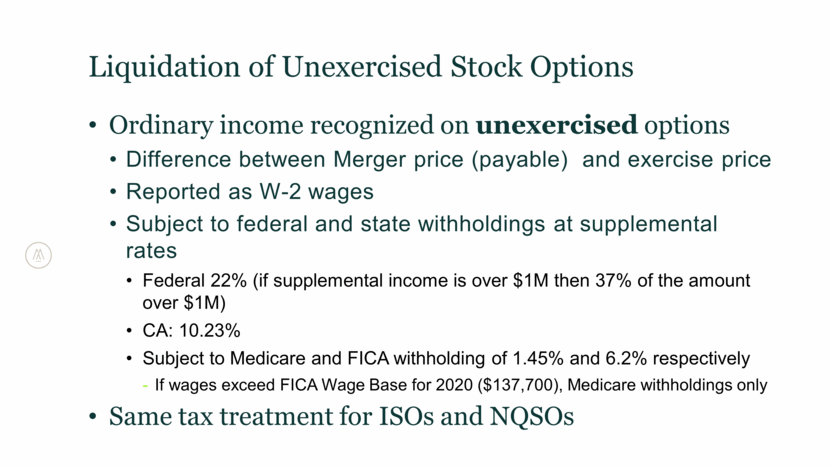
Capital gain recognized on exercised options (shares) Difference between Merger Price and FMV at time of exercise No tax withholdings Character of gain Short term (if Exercise date < 1 year from Merger date) Taxed at ordinary marginal rates, plus 3.8% Medicare surtax Long term (if Exercise date > 1 year from Merger date) Federal: taxed at LT capital gains rate (15% or 20%), plus 3.8% surtax California: taxed at marginal rates (no preferential long LT rate for CA) Liquidation of NQSOs (if exercised)
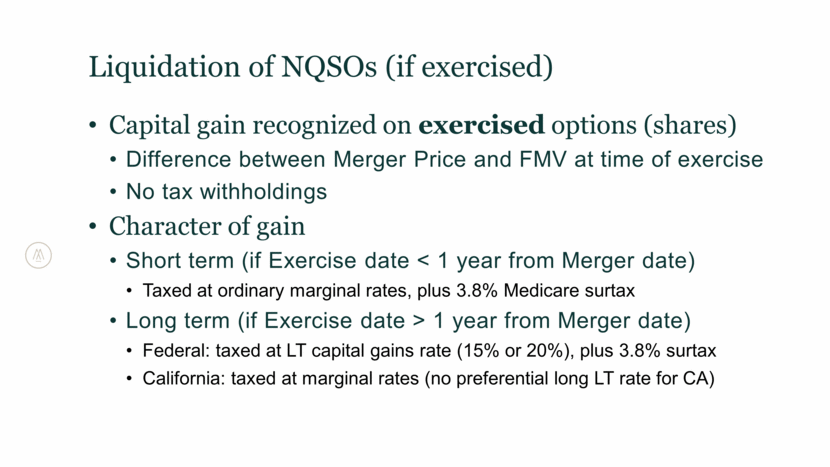
Holding period requirements of a qualifying disposition: Held over two years from date of grant, and Held over one year from date of exercise. ISOs – Qualifying Disposition Date of Grant Date of Exercise Date of Sale
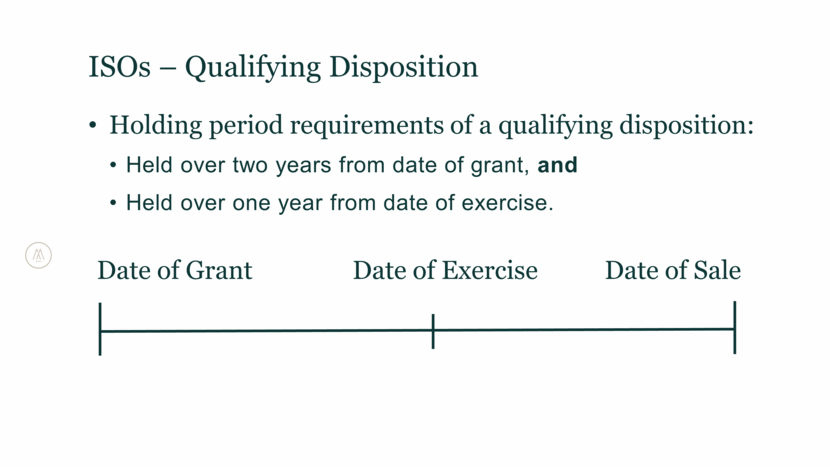
Capital gain recognized on exercised options Difference between Merger Price and Exercise price Character of gain Long term Federal: taxed at LT capital gains rate (15% or 20%), plus 3.8% surtax California: taxed at marginal rates (no preferential long LT rate for CA) AMT Reversal Difference between exercise price and exercise FMV (spread) Reduction to AMT income ISOs – Qualified Disposition
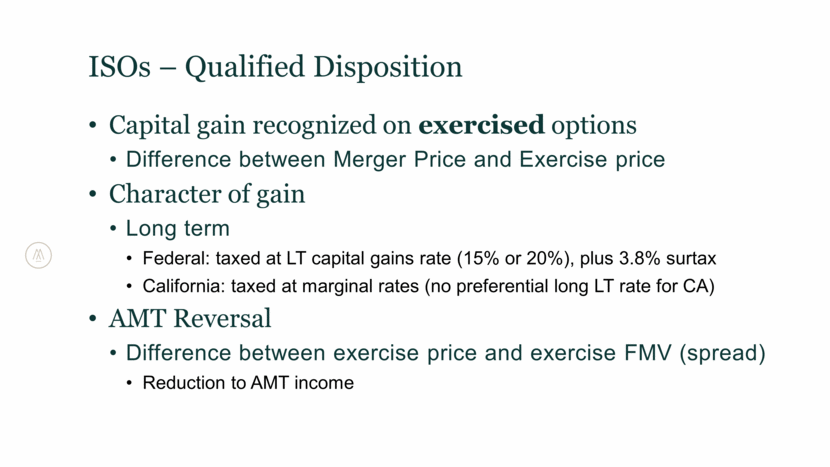
If holding period requirements of a qualifying disposition not met: Difference between Merger price and exercise price taxed as ordinary income Same treatment as unexercised options, but no withholdings! Taxpayer’s obligation to make estimated tax payments to cover the tax on this income ISOs – Disqualifying Disposition
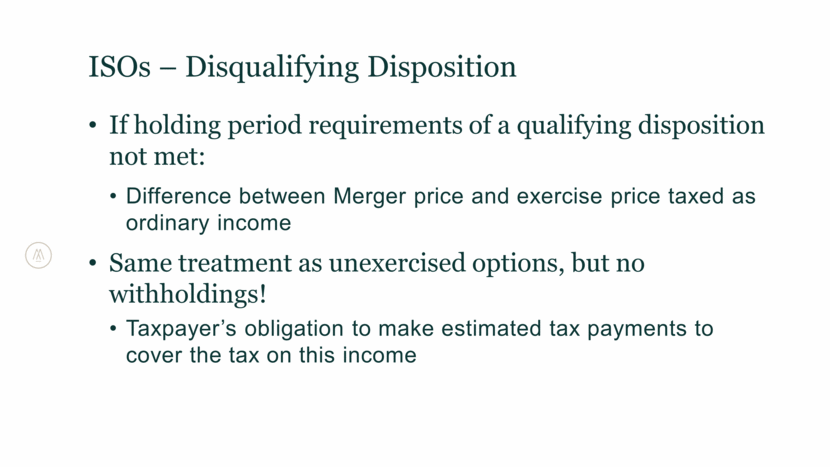
Employee with $200k Salary, $500k merger income Married Filing Jointly Total tax: $188k (federal), $60k (CA) Est. tax due (after withholdings): $49k (federal), ($3.5k) (CA) Est. after-tax take home from deal: $284k (57%) Single Total tax: $219k (federal), $70k (CA) Est. tax due (after withholdings): $70k (federal), $4k (CA) Est. after-tax take home from deal: $249k (49%) Visual Illustration (unexercised options)
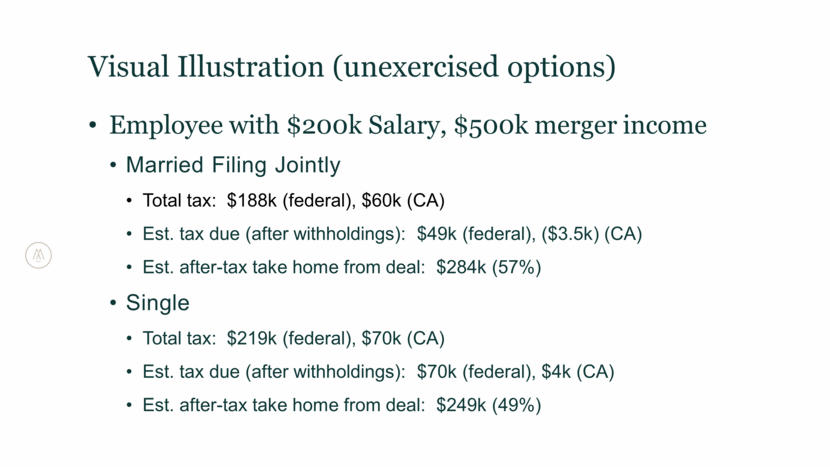
Employee with $200k Salary, $1.2m merger income Married Filing Jointly Total tax: $457k (federal), $145k (CA) Est. tax due (after withholdings): $125k (federal), $10k (CA) Est. after-tax take home from deal: $622k (52%) Single Total tax: $478k (federal), $160k (CA) Est. tax due (after withholdings): $145k (federal), $23k (CA) Est. after-tax take home from deal: $588k (49%) Visual Illustration (unexercised options)
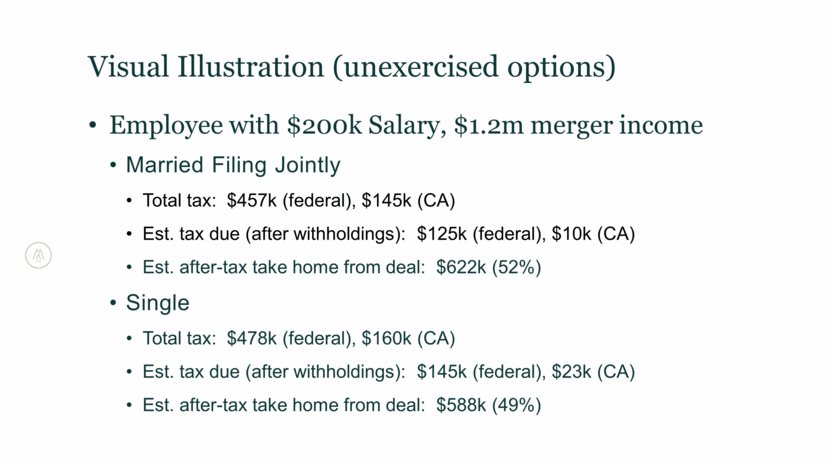
19 General Rule: If you owe tax with the return, you will pay a penalty Exceptions: 110% of prior year tax (not available for CA if AGI over $1 Million) 90% of current year tax CA exception if prior year withholding covered tax liability Important Payment calculated each quarter Payment dates are 4/15, 6/15, 9/15 and 1/15 State rules are different Timing of Tax Payments
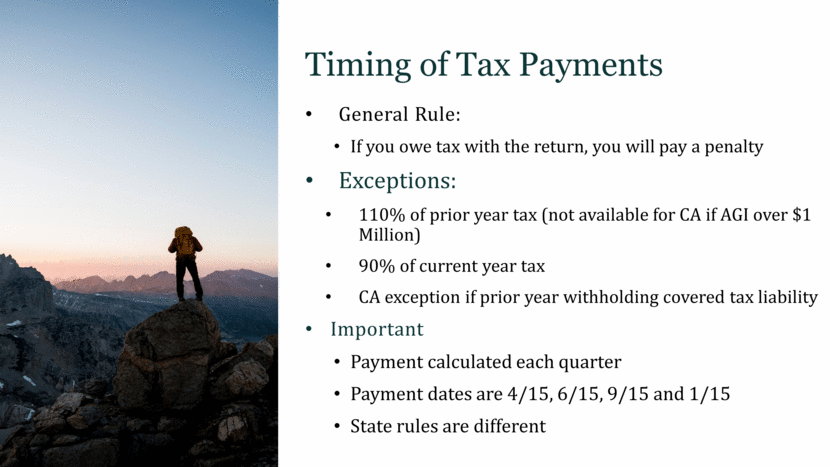
20 Scott Mathews Scott.Mathews@mossadams.com (408) 558-7605 Tax Senior Manager
